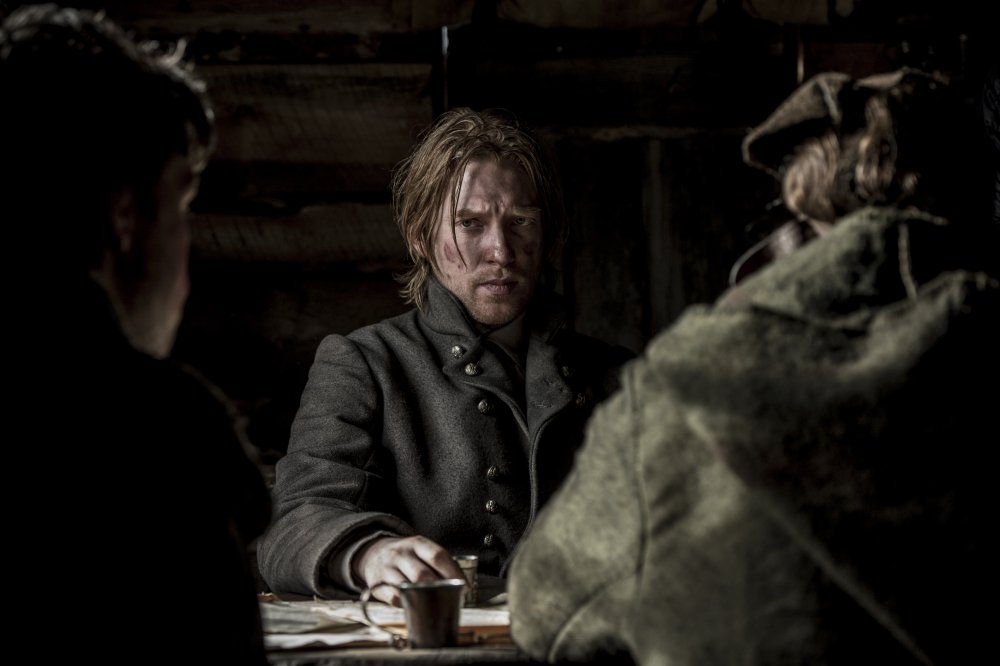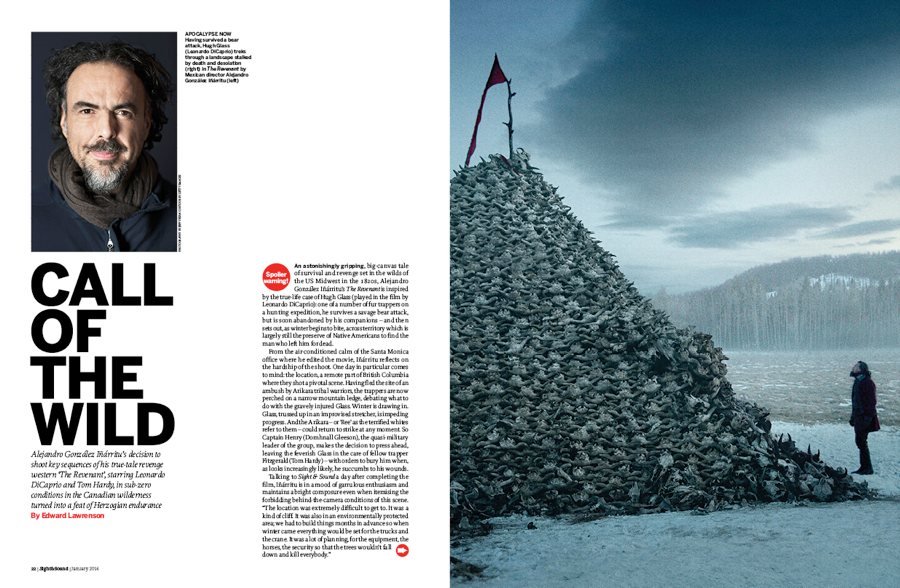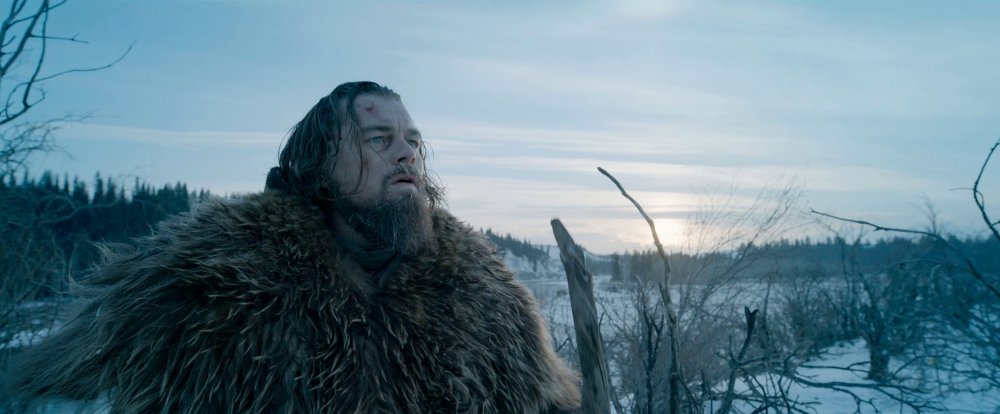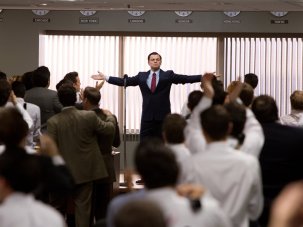The story of Hugh Glass, the tough-as-buckskin American frontiersman who in 1823 dragged his brutalised body over miles of rough terrain after being mauled by a grizzly and left for dead, was the stuff of legend almost as soon as it began to be passed around the young republic. In spite of this fact, save for a loose retelling by Vanishing Point director Richard C. Sarafian with Richard Harris, 1971’s Man in the Wilderness, Glass’s story has never been immortalised on screen in the fashion of, say, the defence of the Alamo, the shooting of Jesse James or the gunfight at the OK Corral. There is one rather simple reason for this: there ain’t a hell of a lot of story there.
USA/Hong Kong/Taiwan 2015
156m approx | Certificate 15
Director Alejandro G. Iñárritu
Cast
Hugh Glass Leonardo DiCaprio
John Fitzgerald Tom Hardy
Captain Andrew Henry Domhnall Gleeson
Bridger Will Poulter
Hawk Forrest Goodluck
Elk Dog Duane Howard
Hikuc Arthur Redcloud
Powaga Melaw Nakehk’o
wife of Hugh Glass Grace Dove
Jones Lukas Haas
Anderson Paul Anderson
Murphy Kristoffer Joner
Dolby Digital/Dolby Atmos
In Colour
[2.35:1]
UK release date 15 January 2016
Distributor 20th Century Fox International (UK)
therevenanttickets.co.uk
► Trailer
This is no obstacle for Alejandro G. Iñárritu, who has shot a version of Glass’s tale adapted from a 2002 novel by Michael Punke, an expert in international trade law and policy. The Revenant begins with a scene from a very different period in US trade history: fur trappers load the fruits of their summer’s labour on to a flatboat, preparing to shove off down the Missouri River, when suddenly a hail of arrows explodes from the forest, followed by a Pawnee war party.
Iñárritu, collaborating with the nonpareil cinematographer Emmanuel Lubezki for the second time after last year’s Birdman, opens fire in tandem, rolling out the film’s first breathless set piece: a violent skirmish staged as an unbroken tracking shot in which the camera latches on to and is passed between combatants on both sides, incidentally picking up bloody vignettes that include a trapper being garrotted with a bowstring and a shirtless drunk putting a bullet through the head of a tethered horse. Every report of musketry sounds off like a howitzer, and when a fleeing mountaineer is tackled and dragged down into the river by a brave, the camera will naturally follow underwater in due course.
The approach to the material taken by Iñárritu and Lubezki – and in the case of The Revenant it seems very fitting to consider the two co-authors – is immersive and visceral. Wide-open spaces and stifling subjectivity combine in filmmaking that variously evokes Elem Klimov, Mikhail Kalatozov, or the mode of Philippe Grandrieux on a multiplex budget, offering an urgent life-or-death engagement with surroundings which substitues for the relative paucity of narrative incident or character development. What story there is embellishes the known facts of the Glass case: mortally wounded by a mama grizzly bear, he is abandoned by the men assigned to minister to him in his final hours. One of these men, John Fitzgerald (Tom Hardy, typically hammy, here sucking on a mouthful of settler beard), dispatches Glass’s half-Native American son before taking his leave, providing Glass with a spur of revenge to keep him moving beyond the limits of exhaustion.

Starring as Glass, Leonardo DiCaprio is on screen for most of the film’s running time, which is listed at 156 minutes but which I am fairly sure is closer to 17 hours. DiCaprio is one of our most viable classical-sense-of-the-word movie stars, though the particular nature of his gifts is better evidenced by his work in the 2013 one-two punch of The Great Gatsby and The Wolf of Wall Street than by anything in The Revenant, which indulges the actor’s puerile equivalency of suffering with serious acting. (I recalled while watching that he petitioned James Cameron to play the hero of Titanic with a club foot.) Faces furrowed in pain tend to look similar, and nothing in the film exploits DiCaprio’s individual skill set as a performer, leaving him to work through he-man hang-ups and literally chew on the scenery (twigs and berries, that is).
While Iñárritu and Lubezki wow in scenes that anyone working with similar money and in similar circumstances could hardly fail to make impressive, the handling of Glass’s family history is a haze of jerky-tough platitudes and cribbed Malick-isms, arbitrarily flitted through in order to give Glass a motive for vengeance and to establish that, through his relations with the Native Americans, he is somewhat less unprincipled trash than the other Europeans in the wilderness.
The plot might belong to an Anthony Mann-James Stewart western, but rather than the creeping queasiness that follows in a Mann film when a thirst for revenge is slaked, The Revenant closes on a heaving, sweaty flop, a physical collapse at the end of an endurance test. As Tarantino has done in his own very different snowbound Christmas western The Hateful Eight, Iñárritu offers up a manifesto that presents a distinct vision of pure cinema and the potentialities of the medium. It is overwhelming but unmoving, a rush of brute force that leaves the nagging afterthought, “Is that all there is?”
In the January 2016 issue of Sight & Sound

Call of the Wild
Alejandro González Iñárritu’s decision to shoot key sequences of his true-tale revenge western The Revenant, starring Leonardo DiCaprio and Tom Hardy, in sub-zero conditions in the Canadian wilderness turned into a feat of Herzogian endurance. By Edward Lawrenson.
-
Sight & Sound: the January 2016 issue

The best films of 2015 as voted for by 168 critics, Alejandro González Iñarritu on The Revenant and Nora Ephron, queen of the romcom.
-
Sight & Sound: the February 2016 issue

Tarantino on Tarantino, Kent Jones on the best of Jean-Luc Godard, Hou Hsiao-Hsien’s ravishing The Assassin, Tom McCarthy’s Spotlight, Lenny...
-
The Digital Edition and Archive quick link
Log in here to your digital edition and archive subscription, take a look at the packages on offer and buy a subscription.







